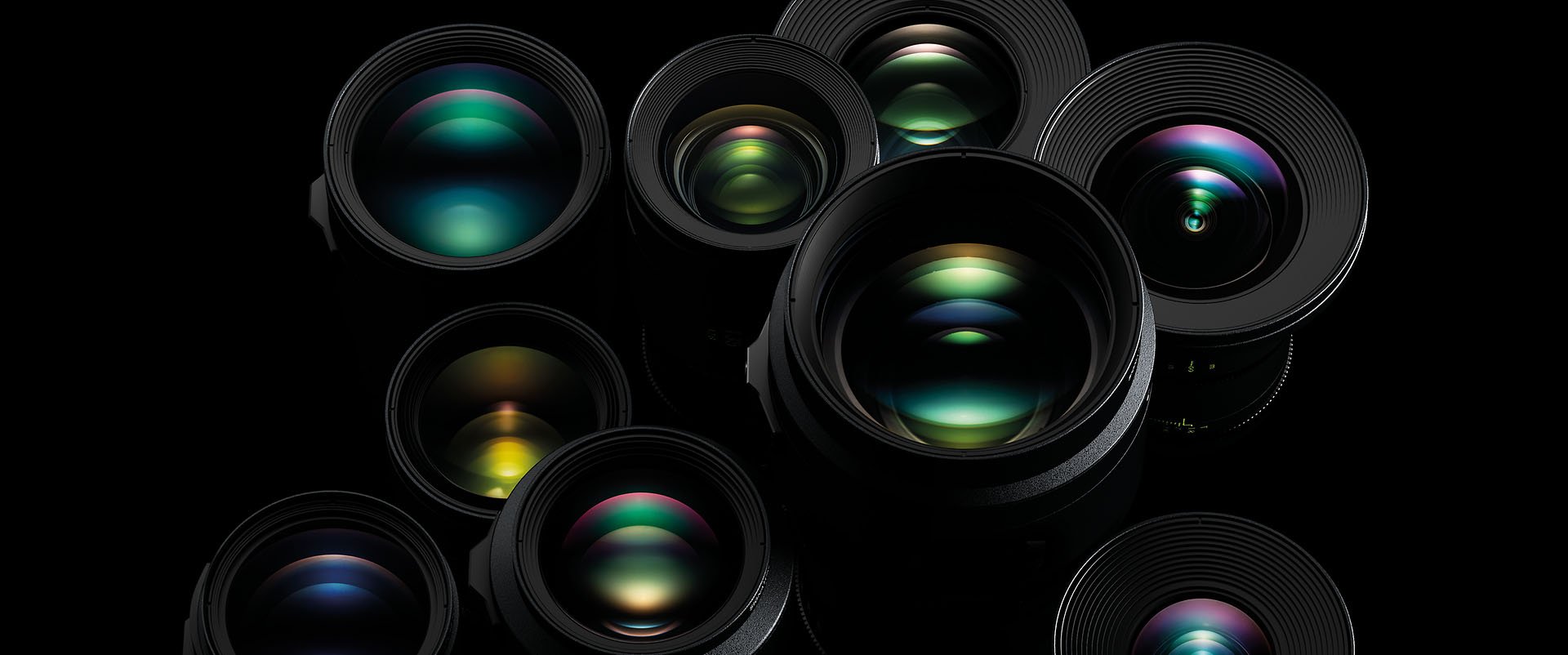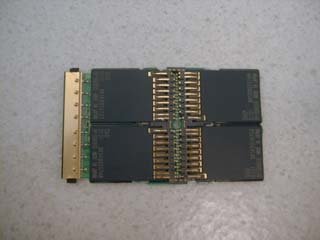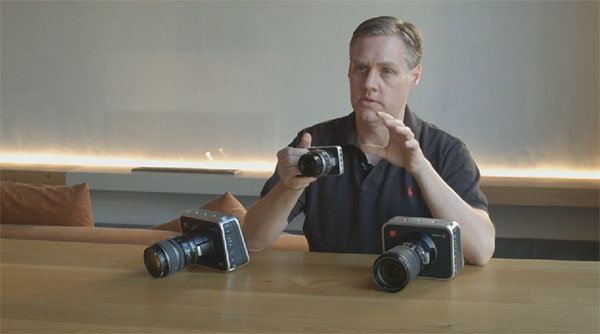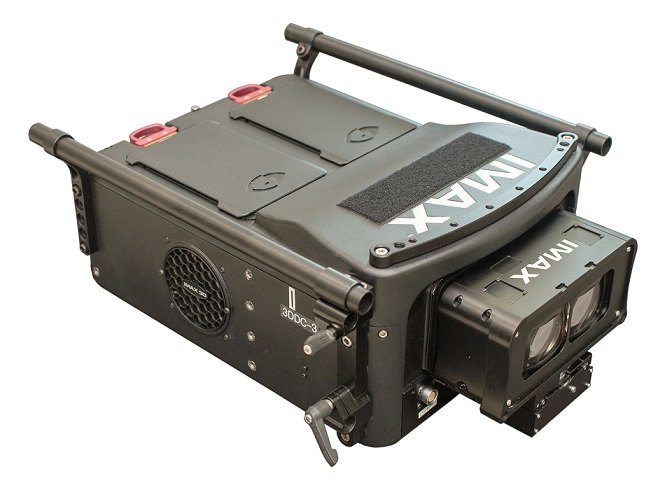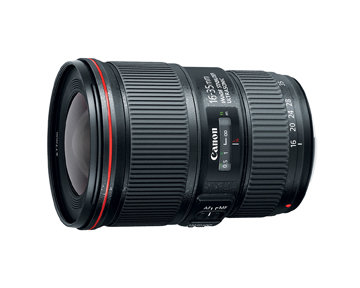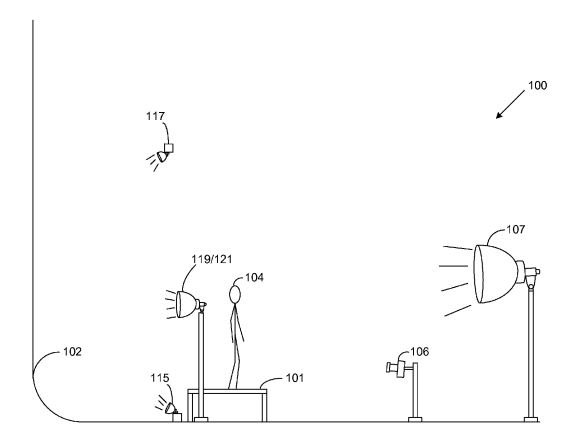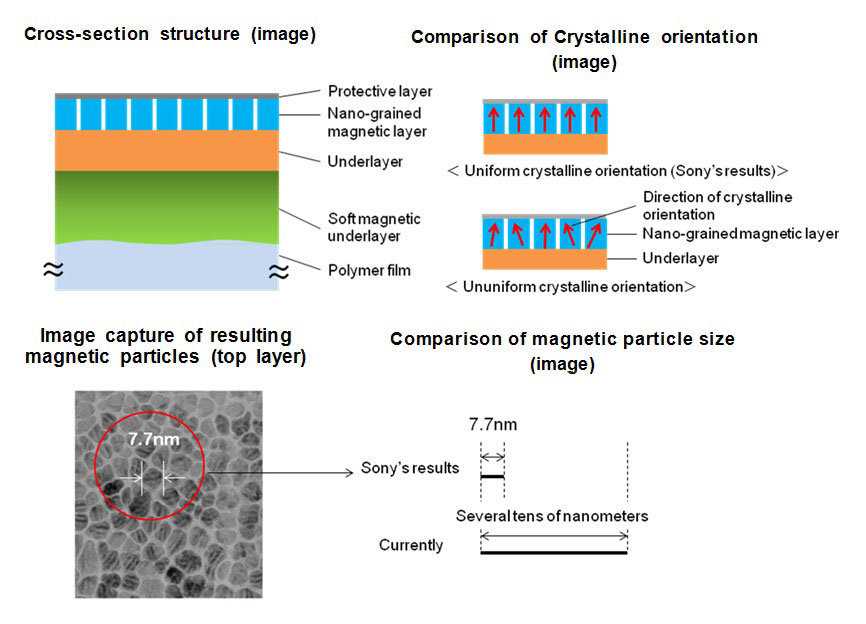-
Posts
1,262 -
Joined
-
Last visited
Everything posted by Tim Tyler
-
There have been numerous Film vs Video threads on Cinematography.com since 1998 when the forum opened. I encourage new members to read through some of the older discussions to see how they evolved before being halted. Today it's more appropriate to have a Film and Video discussion since video technologies have matured and proven themselves as viable, attractive capture and presentation medium alternatives. It's okay to prefer film. It's okay to prefer video. It's okay to change your mind as often as you want. As long as the discussion here remains respectful it will remain open.
- 108 replies
-
I used the small Tasty grip truck a few weeks ago. Nice operation. ---------------------------------------------------------------------------- Tasty Lighting and Acme Stage are located in Minneapolis, near 55, I-94 and 35W, just steps north of the midtown greenway. Tasty Lighting/Acme Stage 2635 S 28th Ave Minneapolis, MN 55406 http://www.tastylighting.com/ Tel. 612 875 5074 Email. mike@tastylighting.com
-
I still have the HPX and the cards. It's makes a good run-n-gun b-roll camera when I need that, which ends up being about 2 days a year.
-
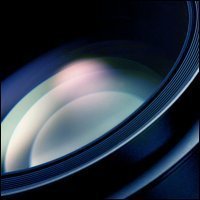
How do we get carpet-bombed by Indian astrologers?
Tim Tyler replied to Gregg MacPherson's topic in General Discussion
I appreciate it when you report the spammers. Thank you. -
-
I started with the P2 system in 2005 but I hardly ever use it anymore.To be honest, the P2 cards and camera paid for themselves several times over so I should not complain. Panasonic's tech and media format never once failed me either. I just wish I could re-purpose the cards in an on-board recorder or something.
-
To think... I paid $8000 for 128GB of P2 cards five years ago. Grrr.
-
The new Blackmagic Camera Update 1.8 software features a completely new code base for all Blackmagic digital film cameras so provides a foundation for new features. This update supports the original wide dynamic range 2.5K Blackmagic Cinema Camera, Blackmagic Pocket Cinema Camera and the Blackmagic Production Camera 4K. This all new code base also improves performance and includes a new modern user interface similar in design to the new URSA camera announced at NAB. This new user interface is included in all models of cameras available from Blackmagic Design, allowing a nice clean fresh look. Includes updated features for all Blackmagic Design cameras and is available now for download free of charge for all existing Blackmagic Camera customers from the Blackmagic Design support page. Features a completely new code base for all Blackmagic digital film cameras, improving performance and including a new modern user interface similar in design to the Blackmagic URSA. Adds compressed RAW DNG support for the Blackmagic Production Camera 4K model. DaVinci Resolve 11, also available today, fully supports RAW grading and rendering to final output direct from the RAW camera original files. This means customers get incredible first generation masters, with a solution that edits RAW files as easily and as responsively as a normal video file. Enhanced lens control support for EF lens mount cameras, such as the original Blackmagic Cinema Camera EF and the Blackmagic Production Camera 4K models. This means customers can now get auto focus when pushing the focus button on active EF based lenses, and the cameras will mathematically analyze the center of the image and optimize the focus for maximum sharpness. Because this update uses the focus button for auto focus, the focus peaking feature is now enabled by double pressing the focus button. Improves the focus peaking display allowing incredibly accurate and super sharp manual focus, critical when using cine lenses. Iris control has been changed, due to customer request, to hold its setting between record and playback. Includes major improvements for the original Blackmagic Cinema Camera models, such as improved audio performance and a completely rewritten new higher quality de-bayer processor. This new de-bayer means when customers record to normal video files, such as ProRes or DNxHD, they will get sharper and cleaner looking images. Other benefits for the original Blackmagic Cinema Camera include enhancements to the camera’s dynamic range when shooting at 1600 ISO, meaning customers will get even more dynamic range and image quality, free of charge, even if they purchased their camera two years ago. Improvements for the Pocket Cinema Camera are also included in this update, including the modern updated interface, new focus peaking and improved de-bayer quality, plus additional active MFT lens support for lenses including Sigma and Lumix. http://www.blackmagicdesign.com/support
-

Big Adobe Update: DCP output, GPU debayering and Amira support
Tim Tyler replied to Tim Tyler's topic in Post Production
I've been a subscriber since December. I have no problems with the subscription model. One billable hour per month in exchange for all that software is a good deal for me.- 3 replies
-
- premiere
- media encoder
-
(and 1 more)
Tagged with:
-
Adobe has made available a substantial update to their CC apps. Highlights include: Output to DCP and AS-11 content packages Enhanced graphics performance, with support for a wider range of GPUs, including GPU debayering for RED media and support for Intel IRIS architecture. Expanded native format support now also includes ARRI Amira, Sony STtP, and broader support for Cinema DNG. https://blogs.adobe.com/premierepro/2014/06/todays-the-day.html
- 3 replies
-
- premiere
- media encoder
-
(and 1 more)
Tagged with:
-
Make sure your gaffer has some nanocavities on the grip truck! :) Researchers create an innovative light-trapping nanostructure using a genetic-inspired approach Physicists at the University of Rochester have created a silicon nanocavity that allows light to be trapped longer than in other similarly-sized optical cavities. An innovative design approach, which mimics evolutionary biology, allowed them to achieve a 10-fold improvement on the performance of previous nanocavities. In a paper published in Applied Physics Letters today and featured on the cover, the scientists demonstrate they have confined light in a nanocavity – a nanostructured region of a silicon wafer – for nanoseconds. Typically light would travel several meters in that time, but instead the nanostructure confined light in a region no bigger than one one hundredth the width of a human hair – roughly one-half millionth of a meter. “Light holds the key to some of nature’s deepest secrets, but it is very challenging to confine it in small spaces,” says Antonio Badolato, professor of physics at the University of Rochester and corresponding author of the Applied Physics Letters paper. “Light has no rest mass or charge that allow forces to act on it and trap it; it has to be done by carefully designing tiny mirrors that reflect light millions of times.” Nanocavities are key components of nanophotonics circuits and Badolato explains that this new approach will help implement a new-generation of highly integrated nanophotonics structures. Researchers are interested in confining light because it allows for easier manipulation and coupling to other devices. Trapping light also allows researchers to study it at its fundamental level, that is, at the state when light behaves as a particle (an area that led to the 2012 Nobel Prize in Physics). Until now, researchers have been using educated-guess procedures to design the light-trapping nanostructures. However in this case, the team of researchers – which included lead author and Badolato’s Ph.D. student, Yiming Lai, and groups from the Ecole Polytechnique Federale de Lausanne, Switzerland, and the Universita di Pavia, Italy – perfected a numerical technique that led to the design improvement. Their computational approach allowed them to search for the optimal combination of parameters among thousand of realizations using a “genetic” (or “evolutionary”) algorithm tool. The principle behind the genetic approach is to regard each new nanocavity as an individual in a population. The individuals mutate and “breed,” meaning that two single structures combine to create a new one that is a cross between the two “parents.” As new generations succeeded one another, the algorithm selected the fittest ones in each generation, in this case, the ones that exhibited the longest trapping time (i.e. highest quality factor). Integrated nanophotonics is a new and rapidly growing field of research laying at the intersection of photonics, nanotechnology, and materials science. In the near future, nanophotonics circuits will enable disruptive technologies ranging from telecommunications to biosensing, and because they can process pulses of light extremely fast and with very low energy consumption, they hold the potential to replace conventional information-handling systems. The results shown by Badolato and his colleagues demonstrate one of the highest quality factors ever measured in nanocavities while maintaining a very small footprint. By keeping the nanocavities so small while trapping light so efficiently it becomes possible to create devices with ultra-dense integration – a desired characteristic in the fabrication of optical nanocircuits. The extreme sensitivity of these nanocavities to tiny changes in the environment, for example a virus attaching near the area where light is trapped, makes these devices particularly appealing for biosensing. By using these highly sensible nanocavities, such a biosensing device could detect minute quantities of these biomaterials by analyzing a single drop of blood. Badolato’s group is now starting a collaboration with researchers at the University of Rochester’s Medical Center to exploit this interesting property with the new nanocavities.
-
Cinematography.com has created an Amazon store to make SSD shopping for your BMD camera or recorder a little easier. Blackmagic Design Recommended SSD's If you have had proven reliability with an SSD that's not "approved by BMD" please let us know, and mention which codecs you used.
-
IMAX has developed the first fully integrated dual 65mm 4K digital large-format 3D camera. The IMAX 3D Digital Camera delivers stunning image quality and is smaller, lighter and easier to use than other 3D digital camera systems on the market. The IMAX 3D Digital Camera is a true 4K stereo camera. This means that both the left eye and right eye images are captured at full 4K resolution. Transformers: Age of Extinction is the first feature film to ever use the new IMAX3D Digital Camera. Exclusively in IMAX theatres, sequences filmed with the IMAX 3D Digital Cameras will be presented in a 1.9:1 aspect ratio – offering moviegoers 26% more of the image than standard cinemas for a truly immersive IMAX 3D experience. The production team on Transformers: Age of Extinction was able to capture major action sequences of the film – including chase scenes and helicopter shots – in high-resolution 3D in a way that was previously impossible thanks to the compact size of the new cameras. What’s unique about the new IMAX 3D Digital Camera? As part of IMAX’s commitment to innovation and providing filmmakers with the highest-quality technology, IMAX developed the first fully integrated dual 65mm 4K digital large-format 3D camera. The IMAX 3D Digital Camera delivers stunning image quality and is less than half the weight of other 3D digital camera systems on the market. The IMAX 3D Digital Camera will provide filmmakers such as Michael Bay with versatility that only 2D digital cameras have been able to deliver in the past. In Transformers: Age of Extinction, the production team was able to capture chase scenes and helicopter shots in high-resolution 3D in a way that previously impossible. Exclusively in IMAX theatres, sequences captured with this camera will expand to fill more of the IMAX screen with unprecedented crispness, clarity, color and 3D for a truly immersive experience. What is the resolution of the IMAX 3D digital camera?The IMAX 3D Digital Camera is a true 4K stereo camera. This means that both the left eye and the right eye images are captured at full 4K resolution. How does the IMAX 3D Digital Camera compare to the IMAX 2D & 3D film cameras? For more than 40 years, IMAX’s 15perf / 65mm film cameras have been the highest-resolution cameras in the world – delivering 10x more resolution than 35mm film. IMAX designed the IMAX 3D Digital Camera as a complementary tool to its other 2D and 3D IMAX film camera systems as well as other camera technology that filmmakers may be using. Filmmakers typically use several different types of cameras on set for different types of shots so IMAX wanted to be able to provide them with the right tool for the right job to help achieve their creative vision. While digital is advancing at a rapid pace, IMAX’s 15perf / 65mm film cameras continue to be the industry gold standard in terms of resolution and it expects they will to continue to be for quite some time. For this reason, IMAX is continuing to build more of these cameras to meet the demand it is seeing among today’s leading Hollywood filmmakers. How does IMAX present films in a larger aspect ratio? The technical term for the proportional relationship between an image’s width and its height is called aspect ratio. Most films today are presented in an aspect ratio called CinemaScope (2.40:1). When a film is presented in CinemaScope, it is often cropped and uses only part of the image the movie camera captures. This is the reason most ordinary screens are very wide but not particularly high – like looking at the world through a narrow slit. IMAX provides filmmakers with the ability to use an expanded aspect ratio for the IMAX presentation of their film so they can utilize much more of the originally captured image - either during production through filming with the extremely high-resolution IMAX camera or protecting more of the image during their post-production process. Exclusively in IMAX theatres, sequences of Transformers: Age of Extinction that were filmed with the IMAX 3D Digital Cameras will be presented in a 1.9:1 aspect ratio – offering moviegoers 26% more of the image than standard cinemas for a truly immersive IMAX 3D experience. More info at https://www.imax.com/imax3dcamera/
-
ARRI speaks with five talented cinematographers about the movies they have in competition at the 2014 Cannes Film Festival which were shot with ARRI cameras. The following video interviews were all captured with AMIRA, ARRI's documentary-style camera. Crystel Fournier, AFC André Turpin Marcell Rèv Javier Julià, ADF http://www.youtube.com/watch?v=uxhCuTFXQRs Sofian El Fani
-
Sound Devices, specialists in audio and video production equipment, presents Video Devices, a new brand and identity for its line of video products. “To reinforce and clarify our audio and video product lines, Sound Devices is focusing its video product efforts into a new brand identity, Video Devices. This new and separate brand will allow us to clearly define and tailor our video product portfolio specifically to video applications and markets,” says Matt Anderson, President of Sound Devices. “While production sound equipment is our foundation and we continue to develop cool new audio gear, video production has become increasingly important for us. The Video Devices brand is a clear message to the industry that we are in this market for the long haul.” http://www.sounddevices.com/news-events/news/sound-devices-introduces-video-devices
-
Singer wanted to shoot the stereoscopic 3D natively, which meant they would need compact, nimble 3D rigs. "The ALEXA M was on the market and had been field-tested, so we decided that was the way to proceed," says Sigel, pointing out that the ALEXA M's smaller size was a big advantage. The film's main unit carried three 3D rigs, totaling six ALEXA M cameras. ARRI had also just unveiled the ALEXA XT, which offers in-camera ARRIRAW recording, internal FSND (Full Spectrum ND) filters and lens data for VFX, among other features, and Sigel liked what he saw. "It's got the beautiful look we all like on the ALEXA that's made it so popular," says the cinematographer, who rated the XT so highly that he bought one. "The fall-off is so subtle and gentle. I was getting the same beautiful look except in full-resolution and a smaller profile." Sigel used the ALEXA XTs for the production's 2D work, including 2nd unit. "The 2D work tended to be action photography that couldn't be captured in 3D," he explains. "It was converted to 3D in post and accounts for about 20 minutes of the movie." Sigel appreciated the flexibility and simplicity of the XT's in-camera ARRIRAW. "I didn't need a recorder or extra cabling," he says. More at http://www.arri.com/news/alexa-xt-on-x-men/
-
Offering image stabilization and a lower price tag than the 16-35 f/2.8, this new wide angle lens should satisfy many C100 and C300 owners. Fully compatible with all EOS Digital SLR cameras including full-frame models like the EOS 5D Mark III and EOS 6D Digital SLR cameras, the compact and lightweight EF 16-35mm f/4L IS USM ultra wide-angle zoom lens offers high image quality and an Optical Image Stabilizer (IS) for shake correction up to four shutter speed stepsii, making handheld shooting possible in dimly lit scenes where camera shake can occur. In addition, an intelligent CPU in the lens automatically selects the optimal IS mode by recognizing differences between normal handheld shots and panning. This technological advancement supports a greater range of creative expression for photographers in otherwise difficult shooting situations, such as dark indoor scenes where flash photography is prohibited, or in places where a tripod cannot be used, or when shooting at low ISO speeds. The EF 16-35mm f/4L IS USM ultra wide-angle zoom lens features newly developed, high quality Canon optics that incorporate three GMo (Glass-Molded) aspheric lens elements, including a large-diameter aspheric lens, which help improve image quality by correcting aberrations. Two additional UD lens elements help reduce chromatic aberration from edge to edge throughout the entire zoom range for excellent image quality with high resolution and contrast. The lens also features enhanced fluorine lens coatings on the front and rear lens surfaces to repel dust particles and help ensure superb color balance while minimizing ghosting. The inner focusing and ring USM offer silent, fast and accurate autofocusing. Full-time manual focus adjustment is available in autofocus (AF) mode. A nine-blade circular aperture creates beautiful, soft backgrounds. A new compact four-group zoom system provides a minimum focusing distance of 0.28m/11 inches throughout the zoom range and a maximum magnification of 0.23x at the telephoto end for outstanding performance.
-
Apparently Jeremy David Sawatzky, Christina L. Porter, Jeff Strauss and Gil Blank invented the process of shooting images and video on a white background. http://patft.uspto.gov/netacgi/nph-Parser?Sect1=PTO2&Sect2=HITOFF&p=1&u=%2Fnetahtml%2FPTO%2Fsearch-adv.htm&r=1&f=G&l=50&d=PALL&S1=08676045&OS=PN/08676045&RS=PN/08676045 United States Patent 8,676,045 Sawatzky , et al. March 18, 2014 Studio arrangement Abstract Disclosed are various embodiments of a studio arrangement and a method of capturing images and/or video. One embodiment of the disclosure includes a front light source aimed at a background, an image capture position located between the background and the front light source, an elevated platform positioned between the image capture position and the background, and at least one rear light source positioned between the elevated platform and the background. A subject can be photographed and/or filmed on the elevated platform to achieve a desired effect of a substantially seamless background where a rear edge of the elevated platform is imperceptible to an image capture device positioned at the image capture position. Inventors: Sawatzky; Jeremy David (Seattle, WA), Porter; Christina L. (Seattle, WA), Strauss; Jeff (Burlington, KY), Blank; Gil (Morris Plains, NJ) 1. A studio arrangement, comprising: a background comprising a white cyclorama; a front light source positioned in a longitudinal axis intersecting the background, the longitudinal axis further being substantially perpendicular to a surface of the white cyclorama; an image capture position located between the background and the front light source in the longitudinal axis, the image capture position comprising at least one image capture device equipped with an eighty-five millimeter lens, the at least one image capture device further configured with an ISO setting of about three hundred twenty and an f-stop value of about 5.6; an elevated platform positioned between the image capture position and the background in the longitudinal axis, the front light source being directed toward a subject on the elevated platform; a first rear light source aimed at the background and positioned between the elevated platform and the background in the longitudinal axis, the first rear light source positioned below a top surface of the elevated platform and oriented at an upward angle relative to a floor level; a second rear light source aimed at the background and positioned between the elevated platform and the background in the longitudinal axis, the second rear light source positioned above the top surface of the elevated platform and oriented at a downward angle relative to the floor level; a third rear light source aimed at the background and positioned in a lateral axis intersecting the elevated platform and being substantially perpendicular to the longitudinal axis, the third rear light source further positioned adjacent to a side of the elevated platform; and a fourth rear light source aimed at the background and positioned in the lateral axis adjacent to an opposing side of the elevated platform relative to the third rear light source; wherein a top surface of the elevated platform reflects light emanating from the background such that the elevated platform appears white and a rear edge of the elevated platform is substantially imperceptible to the image capture device; and the first rear light source, the second rear light source, the third rear light source, and the fourth rear light source comprise a combined intensity greater than the front light source according to about a 10:3 ratio.
-
Sony develops magnetic tape technology with the world's highest areal recording density of 148 Gb/in2*1, able to record approximately 74 times (185TB)*2 more data than conventional magnetic tape media. http://www.sony.net/SonyInfo/News/Press/201404/14-044E/index.html Tokyo, Japan, April 30, 2014 - Sony Corporation ("Sony") today announced that by independently developing a soft magnetic underlayer with a smooth interface using sputter deposition*3, it has succeeded in creating a nano-grained*4 magnetic layer with fine magnetic particles and uniform crystalline orientation. This enabled Sony to successfully develop magnetic tape technology that achieves the world's highest*1 areal recording density for tape storage media of 148 Gb/in2 (gigabits per square inch). This areal recording density is equivalent to approximately 74 times the capacity of current mainstream coated magnetic tape storage media, and makes it possible to record more than 185 TB (terabytes)*2 of data per data cartridge*3. Sony will jointly announce these results with IBM Corporation, who assisted with measuring and assessing the recording density of this new technology, at the INTERMAG Europe 2014 international magnetics conference to be held in Dresden, Germany beginning on May 4. *1: As of April 30, 2014. *2: When compared to a LTO-6 high-end LTO Ultrium format data cartridge utilizing a linear recording system (uncompressed). When converted to one LTO-6 cartridge. *3: The sputter method is one form of thin film deposition. Electrostatic discharge is used to force argon (Ar) ions to collide with the material (target), and the materials generated from the collision become the thin layer deposited on the substrate. *4: Magnetic particles of a few nanometers in size Cross-section structure / Comparison of Crystalline orientation / Image capture of resulting magnetic particles (top layer) / Comparison of magnetic particle size In recent years, the rapid recovery of data systems such as databases and data servers following natural disasters, as well as secure management of information has become ever more important, and companies around the world are proceeding to build new data systems. In addition, the expansion of cloud services and the creation of new markets to utilize big data have led to a growing need for a data storage media which can store large amounts of information. Magnetic tapes with a coating of magnetic powder measuring tens of nanometers applied to the top of the film are currently considered the mainstream form of tape storage media. LTO-6 high-end LTO Ultrium format data cartridges that are based on this technology utilize a linear recording system (uncompressed) and have an areal recording density of approximately 2 Gb/in2, with a total recording capacity of 2.5 TB (uncompressed). Until now, recording density of this type of media was increased by enhancing the miniaturization technologies that enable the size of magnetic particles on which data is stored to be decreased. Although coated magnetic tape is highly suited for mass production, the development of technologies capable of further reducing the size of magnetic particles in order to increase recording density in the future has become a significant challenge. Sony has developed a new vacuum thin film forming technology which is able to form extremely fine crystal particles with the aim of creating a practical, next generation tape storage media. This newly developed magnetic tape technology uses sputter deposition, a type of vacuum thin film forming technology, to generate multiple layers of crystals with a uniform orientation on a polymer film with thickness of less than 5 micrometers. Until now, when the sputter method was used to deposit a thin film of fine magnetic particles on a polymer film, roughness on the surface of the soft magnetic underlayer caused the orientation of the crystals in the underlayer above it to become non-uniform. This in turn caused non-uniform crystalline orientation and variations in the size of the magnetic particles (grain) in the nano-grained magnetic layer directly above the underlayer, and prevented increases in recording densities. By optimizing sputter conditions and independently developing a soft magnetic underlayer with a smooth interface, Sony has made it possible to minimize disparities in crystalline length and growth. This enabled Sony to create a nano-grained magnetic layer composed of fine magnetic particles with an average size of 7.7 nm. When the magnetic tape created using this technology was measured and evaluated using an exploratory recording and assessment device, this new media was shown to achieve the world's highest areal recording density of 148 Gb/in2, equivalent to approximately 74 times the capacity of conventional coated tape media for data storage. Sony will continue to work towards commercializing this next generation tape storage media, as well as the development of increasingly advanced thin layer deposition technologies based on the sputter method, with the aim of increasing recording densities even further.
-
Ever wonder how a timecode slate is used? This in-depth, extremely technical video tutorial will answer all your questions. ;)
-
We the producer team Fero Andersen, Tobias Koertge, Philipp Schumacher tested the ARRI AMIRA for three days of shooting for the BMW M5 commercial. Let me just say, right off the bat that the ARRI AMIRA cannot be compared to any other camera. The handling and images of the AMIRA are nearly unparalleled. http://www.arri.com/news/arri-amira/ ARRI gave us the opportunity to test the ARRI AMIRA extensively at the end of February. Because we didn't want to change course with the color charts, I got some creative support from Producer Philipp Schumacher, who has lent his creative talents to Adidas, Red Bull and Siemens -- and Moderator Fero Andersen, famous for the programs "Schau dich Schlau", "BMW TV" and shows on ZDF Neo. I wanted to film something with cars because cameras often reach their limits here due to high contrast and rolling shutter problems. We were able to get M-GmbH to kindly provide us with a BMW M5. After a little brainstorming, it was clear that we wanted to portray the car as dynamically as possible using the ARRI AMIRA at 200 frames per second. To commemorate the 30th birthday of the BMW M5, we came up with a concept that would do justice to the car and its past. In order to put the camera through the ultimate endurance test, we decided on a traditional advertisement. And because I also wanted the greatest flexibility possible and to be able to film without long conversion times, Kameraverleih Licht&Ton KLT GmbH provided us with the Fujinon Cabrio 19-90 mm zoom lens as well as comprehensive lighting such as the ARRI M18 and a camera platform. Shortly after filming, ARRI asked me about which camera I would have used to film the spot if the AMIRA had not been available. I couldn't really answer this question because I had already finished filming with the AMIRA and in my opinion there is no other comparable camera out there. The ARRI AMIRA sensor is the same as the ARRI ALEXA. The ALEXA is so successful because the colors, acuity and dynamic range are nearly unmatched. This sensor is available in the AMIRA with the added bonus that the handling of the camera is very ergonomic for any camera operator, regardless of whether it's an advertisement, film or documentary. For example, we shot with the camera attached to the outside of the car showing our presenter Fero Andersen. During the day, we had wonderful sunshine and thus a high contrast range. I was able to film without extra light in the car. The ARRI AMIRA has a dynamic range of 14 stops. AMIRA is extremely fast, which makes it possible to film free from noise even when the hour is late. The internal ND filters, which are available up to a power of 2.1, are absolutely indistinguishable. Everyone knows that the look changes slightly when you use an ND glass filter; however this is not the case at all with the AMIRA. It records to the new CFAST 2.0 cards. This enables a 4444 recording, internally! The complete spectrum can be used, 2K, ProRes 4444, C-Log. Forty-eight minutes of material fit on one 120 GB card in full HD resolution; however, only seven minutes fit on the card at 200 frames. What really stands out with this camera is its handling. All functions that are required for a day of filming can be assigned directly to the buttons on the camera. I set functions such as frame rate, white balance and ISO values to the function buttons. For the rest of the day, I never needed to access the menu. I could spontaneously decide to film for example, at 200 frames. The menu is typical ARRI easy and uncomplicated. Additional functions can be added directly to the function buttons of the viewfinder, such as False Color, Exposure or Peaking. The viewfinder of the ARRI AMIRA also has a high resolution OLED display with a folding monitor that is also equipped with OLED technology. I set the colors in the viewfinder and activated the False Color function on the monitor to check the exposure. I recorded in C-Log and set the look via the 3D LUTs on the viewfinder. ARRI offers a huge selection of customisable 3D LUTs. The monitor can be used to access the AMIRA menu. When recording handheld, my camera assistant, Maximilan Schmelzer, was still able to make changes in the menu or check the picture detail. The menu and all additional functions are easily accessible without having to put down the camera. We equipped the AMIRA with the ARRI Broadcast Plate, which made it possible to switch from a stand to the shoulder in seconds. The AMIRA is very solidly built, which makes it a bit heavier. In return though, you don't have to worry about how you handle the camera or that something might break. The upper handle of the camera (as well as other parts of the camera), are moveable. The major benefit of this is that the handle can be moved so that it is over the camera's center of gravity. This results in a well-balanced AMIRA with which you can comfortably film from the shoulder. Audio inputs are designed as an integral unit with the camera. No cable gets in the way; they are simply nestled against the camera. Audio functions are accessible like with an EB camera. In addition, via two XLR three-pin inputs, there is also a five-pin input as well as the option for a Bluetooth microphone. Personally, I am completely blown away by the ARRI AMIRA. It incorporates several camera models in one and offers easy and straight-forward handling. This camera can be used for any type of filming - documentary, corporate video or advertisement. ARRI has once again proven that they not only know their customers well, but they also know what we go through on the set every day. Im certain that I will not be the only one who will be completely wowed by the ARRI AMIRA.
-
Tuesday, April 29, 2014, 9:30 a.m. – 12 p.m. With Featured Guest Speaker Victor J. Kemper, ASC Held at the historic ASC Clubhouse in Hollywood, the event will begin with a light breakfast, during which attendees can meet and mingle with a group of ASC cinematographers, followed by an in-depth interview and audience Q&A with the morning’s special guest. This month’s guest is Victor J. Kemper, ASC. A past recipient of the ASC Lifetime Achievement Award, Kemper launched his career in New York City and went on to build an incredibly diverse body of work, ranging from dramas such as The Friends of Eddie Coyle and Dog Day Afternoon to comedies such as The Jerk, Pee-Wee’s Big Adventure and Tommy Boy. His credits also include Husbands, The Candidate, Slap Shot, Magic, The Final Countdown, National Lampoon’s Vacation and Clue. Kemper will screen and discuss selected scenes from his work during this not-to-miss event. ASC Clubhouse 1782 North Orange Dr. Hollywood, CA 90028 Advance tickets are available in the ASC Online Store for $35, with a special discounted rate of $20 for Friends of the ASC. Tickets are first-come, first-serve; if seats are still available on the morning of the event, tickets will be sold at the door for $40. There will be no on-site or validated parking: Please use the lots at Hollywood and Highland Breakfast with the ASC — the most important meal of the day!
-

Against The Wild: Walmart Promotion.
Tim Tyler replied to a topic in On Screen / Reviews & Observations
I'm gonna watch it with my kids on Amazon. :)


